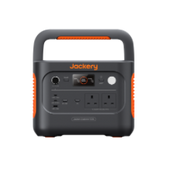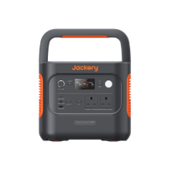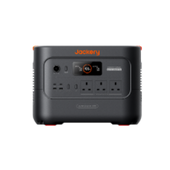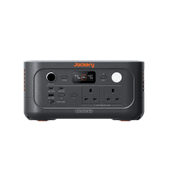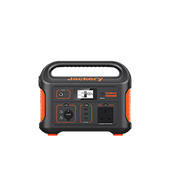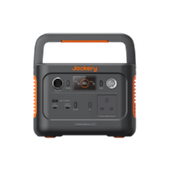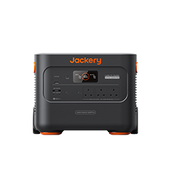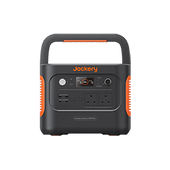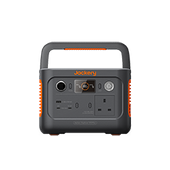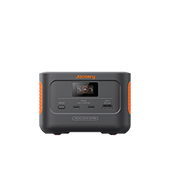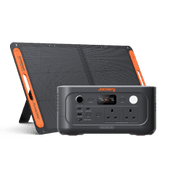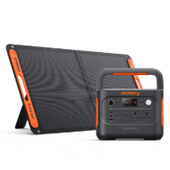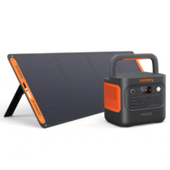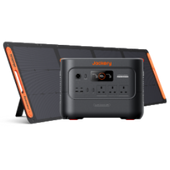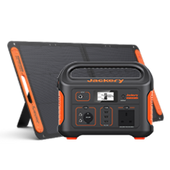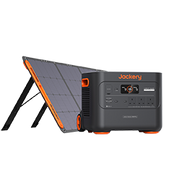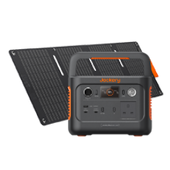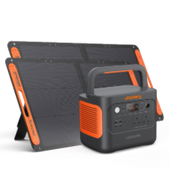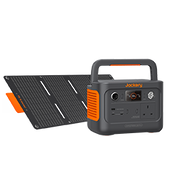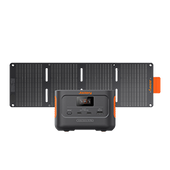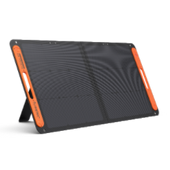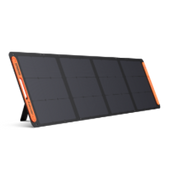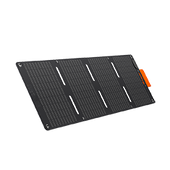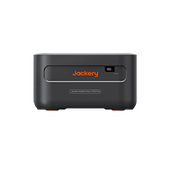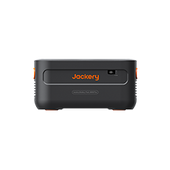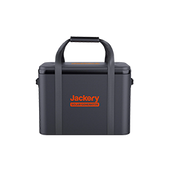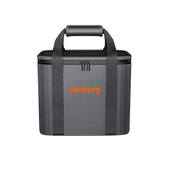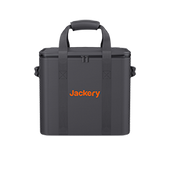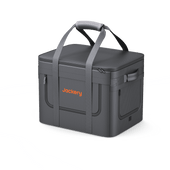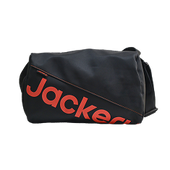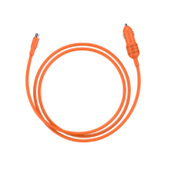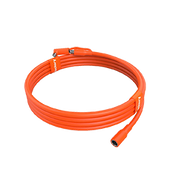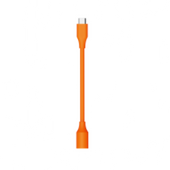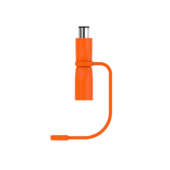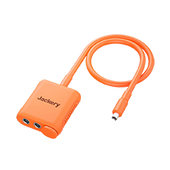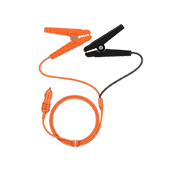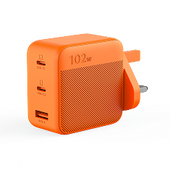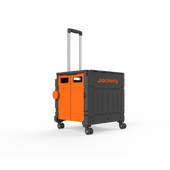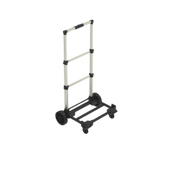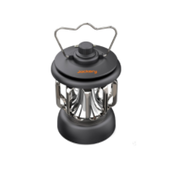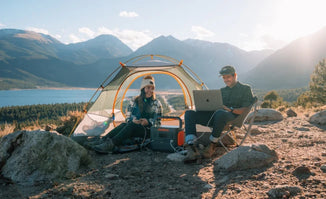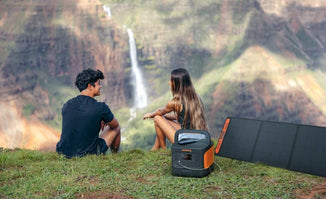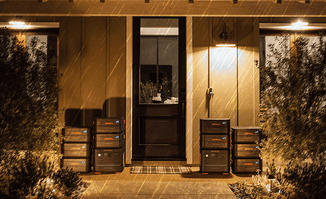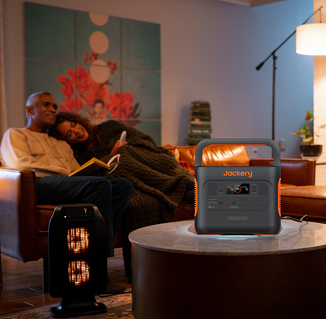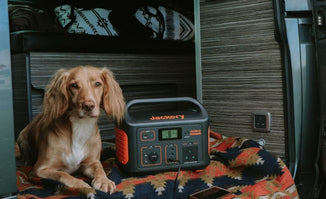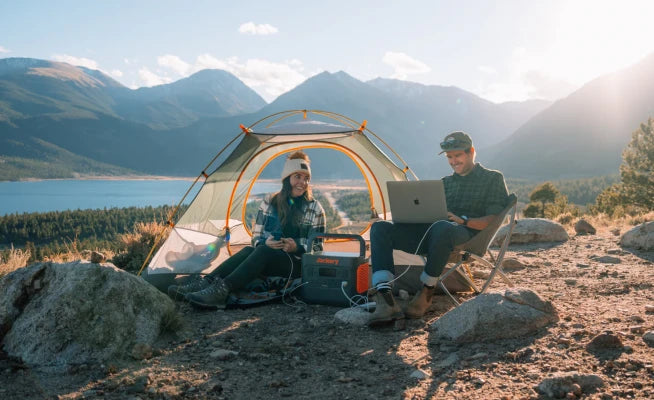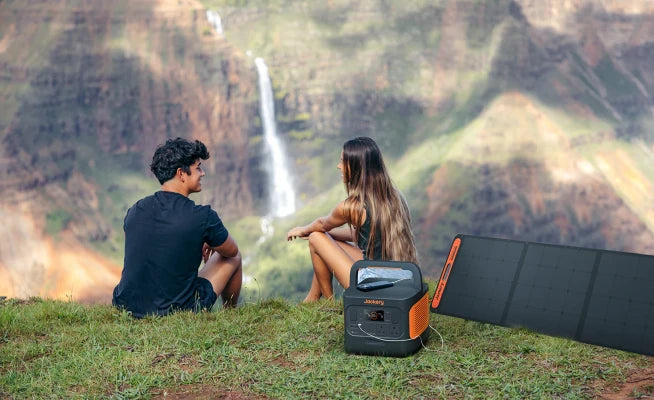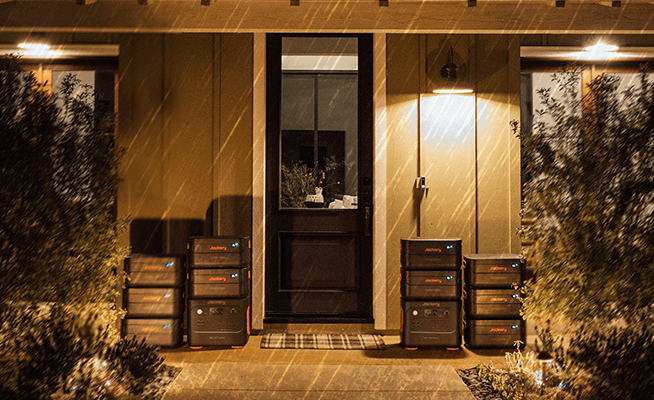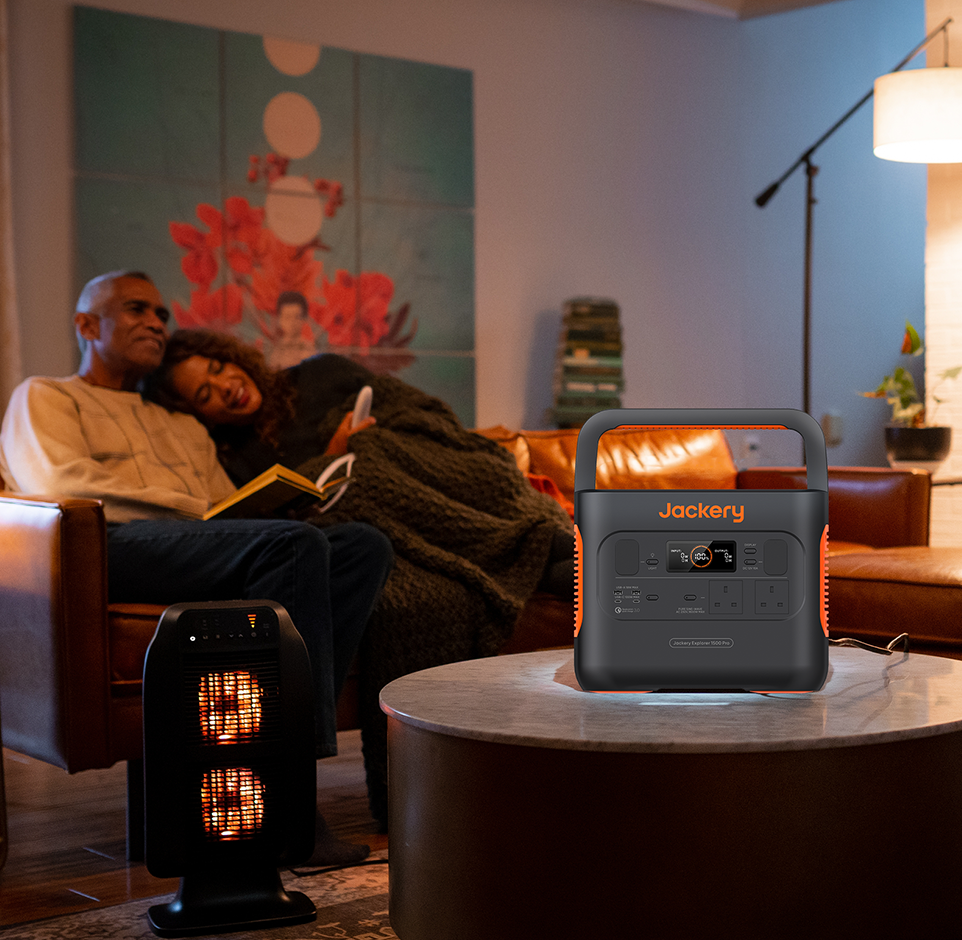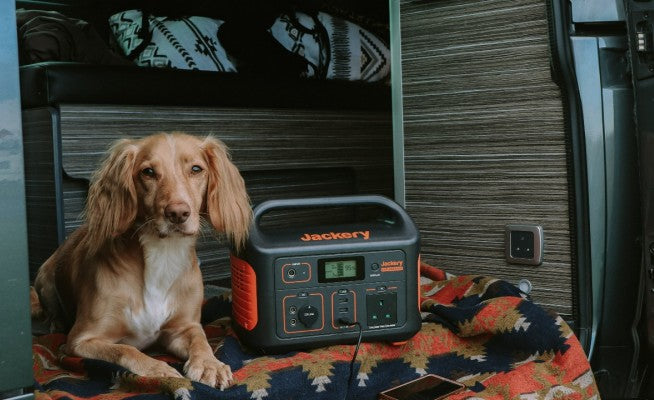Trout Fishing 101: How to Catch Trout
More anglers catch trout than any other species of fish. Trout fishing in America's shaded coastal streams, urban ponds, alpine lakes, and high arid rivers can provide anglers with a lifetime of diverse and rewarding experiences.
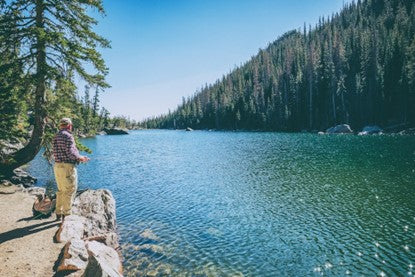
Whether your fishing location has native trout or is stocked with the species, familiarize yourself with the fundamentals of trout angling. You will be prepared for a beautiful day on the water if you know everything from baits to behavior.
This comprehensive guide to trout fishing covers trout behavior, species, equipment, techniques, and advice. We highly recommend Jackery Solar Generators for your fishing power requirements, and the Solar Generator 1000 Pro is suitable for trout fishing with its 1002Wh capacity, which can power most of your fishing equipment, including your boat.
 |
|
|
- 1002Wh Capacity, 1000W Inverter, 2000W Surge - Quick Solar Charging in 1.8 Hours - Use Weekly for 10+ Years - Waterproof, Foldable & Portable Solar Panels - 3+2 Years Warranty |
Why Is Trout Fishing So Popular
In the United States, trout are much sought after as a sport fish, especially in the warmer regions. Depending on the water and environment, trout can reproduce naturally or be raised in hatcheries before being stocked in popular fishing sites during the fishing season.
Most trout anglers fish for purposes other than catching trout, such as the chance to see a trout with brighter-than-natural colors reclining in a drooping landing net.
Other reasons include the sound of gurgling water or the silence of water flowing slowly through a cedar swamp. Or it could be the chance to observe a deer grazing in the river. A freshly fried quantity of pan-sized trout or a newly grilled lunker is hard to beat if the angler seeks a meal.
Trout Species
Numerous species and subspecies of trout and char exist in the United States. The native ranges of the rainbow and eastern brook trout have been expanded by introductions elsewhere.
Rainbow Trout: They are the most extensively stocked and distributed trout in the United States. They naturally inhabit many rivers and streams and are distributed in ponds and lakes. They vary significantly in color but are typically silvery with a pink to scarlet stripe on each side.
Cutthroat Trout: The name Cutthroat Trout derives from the reddish-orange slashes on the underside of the lower mandible. The most prevalent cutthroat trout available to most anglers is the coastal cutthroat, which inhabits numerous streams and beaver ponds in coastal drainages.
Brown Trout: In bigger water bodies, such as rivers and lakes, these trout can grow to a maximum length of 30 inches; in smaller streams, they top out at 11 inches. Although brown trout have a diverse diet, fishers targeting sizeable brown trout typically employ spinners or flies that resemble minnows.
Brook Trout: From high mountain lakes to headwater tributaries, Brook Trout is widely dispersed. In both wilderness and non-wilderness upper lakes, they are the most prevalent game fish.
Trout Fishing Equipment & Gear
Trout fishing can only be done with mastery of fly rod and reel fishing. You can have as much fun catching trout in lakes, rivers, and streams with an ultralight rod and a small spinning reel.
If you want to be entirely prepared for trout fishing, you'll need a few specific items. These items have been compiled into a list to assist you in getting begun.

No.1: Trout Fishing License
In most areas, a fishing license is also required for trout fishing. Typically, fishing licenses are available for one day to one year. Some states provide free or discounted fishing licenses to minors, seniors, individuals with disabilities, and possibly other anglers.
No.2: Trout Fishing Reel & Rod
A spinning or casting rod with a complementary reel is an excellent starting point for conventional bait or lure trout fishing. If this is your first pole, purchase quality but not excessively expensive gear. A typical trout pole is approximately six feet in length.
If you want to catch trout or any other common freshwater fish, like bass, you'll need a rod and reel to handle a main line with a 4- to 8-pound gauge.
No.3: Trout Fishing Leader & Line
Six-pound test on my spinning reel is the standard mainline weight for trout fishing, although 4-pound or 8-pound can be more effective in certain conditions. You can select monofilament or various other lines, including fluorocarbons, depending on inclinations.
No.4: Trout Fishing Lures & Baits
Some anglers prefer to locate lures near the river they will be fishing. There are aquatic larvae known as hellgrammites, grasshoppers, grubs, leeches, and caddisfly cases that can be found with digging. Once secured with No. 10 to No. 14 bronze hooks with regular shanks, these worms will remain sprightly for several minutes underwater. Additionally, minnows and mealworms can attract trout.
Artificial or prepared baits are simple and sometimes unbearable when fishing in lakes and ponds for trout raised on a fish hatchery diet. Some of the most popular lures are doughs and pre-formed baits that are simple to attach to hooks.
No.5: Jackery Solar Generator
The Jackery Solar Generator combines SolarSaga Solar Panels with a Portable Power Station to convert sunlight into clean, limitless, and nontoxic electricity. You must own one to ensure that your electronic devices have power and are connected in the event of an accident that prevents you from communicating with others.

If you have numerous fishing gear or want to power your boat, solar generators can be an excellent way to power multiple electronics, mainly if you are far from shore.
Whether you fish in saltwater or freshwater, using a Jackery Solar Generator helps reduce your carbon output and utility bills.
No.6: More Trout Fishing Accessories
Another essential piece of trout fishing equipment is a quality pair of sunglasses. In addition to protecting your eyes from the sun's UV rays, a high-quality pair of polarized spectacles offer anglers a significant advantage by allowing them to see into the water.
You can also use netting, creels, and hats when fishing for trout. The conventional trout fishing net was maple wood, featuring an 8-inch handle and 34-inch nylon weave.
When & Where to Fish Trout
Trout are widespread and can be found in virtually any body of water that provides:
- Food, such as aquatic insects, minnows, and crayfish
- Fresh, calm water
- Concealment and defense against predators
Typically, trout habitats are classified as either still or flowing waters. Whether you're fishing in still or moving water, the fish's location, behavior, and angling techniques will differ.
Still Waters
In still waters, trout are "cruising" the water for sustenance. However, trout want to stay within cover that protects them from predators. The following locations are likely to contain trout in lakes and ponds:
- At the edges of streams where the water is chilly, there is a good chance of finding food, such as around logs, stumps, rocks, or other structures.
- Near or above aquatic vegetation.
- Deeper waters, particularly during the hot summer months when trout seek calmer water and protection from aerial predators.
Spring and autumn are the best seasons for trout fishing in lakes at lower elevations when the water is more relaxed and the trout are more active, which is also when most reservoirs are stocked with fish. During the hot summer months, anglers can search for trout in calmer, deeper waters or high mountain lakes that remain calm throughout the year.
Moving Waters
In moving water, trout remain stationary and wait for the current to deliver food. The principal food source for these fish is drifting aquatic insects. In addition to food and safety from predators, trout in moving water also seek a place to recover from the current. Consequently, the following are probable trout habitats in rivers and streams:
- Hidden behind boulders or other obstructions (Search for water where the surface is textured with bumps or riffles, often formed when water travels over rocks and boulders in the river bed.)
- Near precipitous or eroded bank faces
- In sluggish, deeper pools
When water temperatures are cooler in the spring and autumn, most rivers and streams offer the best trout fishing. Few rivers and streams are stocked with fish, so you will likely be angling for fish that reproduce naturally or are wild. As the water temperature rises, search for trout in swifter riffles where water is re-oxygenated as it cascades over rocks.
Trout Fishing Techniques & Tips
Not all of these seven million anglers are trout experts. It is commonly believed that only 10% of all fishermen capture 90% of all trout. These 10 percent possess a comprehensive understanding of fish and streams. There are primarily three techniques for trout fishing:
- Bait fishing: Still-fishing with bait is the most common and foolproof method to catch trout. Because trout in still waters often cruise just above the bottom for food, bottom fishing can be very effective.
- Lure fishing: Various artificial lures are effective for trout fishing, including spinners, spoons, jigs, plugs, and crankbaits. Most of these lures imitate a fish's natural food sources, such as lesser fish, crayfish, and prey.
- Fly fishing: Fly fishing is commonly regarded as the apogee of trout fishing, regardless of whether you are drawn to blue-ribbon trout streams or crystal-clear mountain lakes.
Still Waters Trout Fishing Tips
There are numerous techniques for trout fishing, but the following are the most straightforward techniques for fishing for trout in lakes.
We are suspending the lure beneath a bobber. Place a piece of worm, a small amount of PowerBait, or a similar product on a lure hook. Add a bobber 1 / 12 to 3 feet above the hook and a small lead weight just above the hook to assist the bait sink.
Wait for the bobber to dive, wiggle, or jolt at a likely location after it has been cast out. This technique is effective when fish cruises closer to the surface or when you wish to suspend your lure and hook above a weed bed.
Bait fishing from the seafloor. Occasionally, trout are found in deeper water, so the lure must be placed where the fish are. In this technique, the lure is not suspended by a bobber. Instead, the lead weight is about 1.5 feet above the baited hook and tossed into the water. As the lead weight sinks to the lake floor, the bait will rise to a depth of about 1.5 feet.

Moving Waters Trout Fishing Tips
Instead of your retrieve, the current in moving water will determine how your lure moves in the water. Some effective techniques for trout angling in moving water include:
Spoon or spindle casting. Cast the spinner slightly upstream and retrieve any excess line.
As the river current transports the spinner downstream, keep as much fishing line as possible out of the water to create a natural "drift." Begin a moderate retrieve once the spinner has swung toward the shore and is facing directly downriver.
It would be best to use a split shot to get a worm or artificial lure within a few inches of the bottom. Occasionally, adding a bobber will aid in determining where the bait is drifting.

What Size of Solar Generator Do I Need for Trout Fishing
Solar generators produce electricity without the use of fuel. They are an excellent option for anglers who wish to reduce their dependence on conventional, fuel-powered generators, and they have almost no commotion to spook trout.
Jackery is a well-known manufacturer of superior solar equipment, such as solar panels, power stations, and solar generators. Jackery Solar generators convert solar energy into electrical power through solar panels and store it in a portable power station for later use. Solar generators from Jackery provide pure and reliable backup power for fishing, camping, hiking, RVs, and anyone else who requires it.

Jackery solar generators are renowned in the international solar market for their durability, portability, and uniqueness. They provide numerous AC outlets, DC carports, and USB charging terminals for your climbing gear. The pass-through charging mechanism enables simultaneous appliance and power station charging.
The Jackery Solar Generator 500 has a capacity of 518Wh, a 500W inverter, and a surge power of 1000W. It incorporates the Explorer 500 Portable Power Station and the SolarSaga 100W solar panel. It has three USB connections, one AC receptacle, and a 12V automobile output, and it converts solar energy to deliver reliable PURE SINE WAVE power to lamps, electric fishing reels, phones, and other small electronics and appliances.
|
Series |
Capacity |
Ports |
Recharge Time |
Fishing Electronics |
|
Jackery Solar Generator 500 |
518Wh |
3*USB Outputs 1*AC Output 1*12V Carport 2*DC Output 1*DC Input |
1*SolarSaga 100W: 9.5H |
Fishing Reel(60W): 7H Fishing Rod(10W): 44H USB Lure(2.5W): 176H Fish Finder(150W): 3H Fishing Cooler(60W): 7.3H |
|
AC Adapter: 7.5H |
||||
|
12V Car Adaptor: 7.5H |
Jackery Solar Generator 1000 Pro is a "faster than fast" portable solar generator consisting of SolarSaga 200W solar panels and an Explorer 1000 Pro portable power station. The solar generator's lifespan is ten years, and it can ultimately be charged in 1.8 hours. Its dual 100W PD architecture provides consistent power, enabling the charging of all essential devices during power outages and when residing off-grid.
Up to 93% of appliances, such as refrigerators, CPAP machines, e-bikes, and bilge pumps, can be powered by the 1000 Pro solar generator. In addition, it features 2* USB-C and 2* 100W PD ports for charging your phone, ice maker, USB lure and fish detector, among other devices.
|
Series |
Capacity |
Ports |
Recharge Time |
Fishing Electronics |
|
Jackery Solar Generator 1000 Pro |
1002Wh |
1*USB-A 18W Max 2*USB-C Output PD 100W MAX 1*Car Port 120W (12V/10A) 3*AC Output (1000W, 2000W Surge Peak) |
4*SolarSaga 200W: 1.8H
|
Fishing Reel(60W): 13.4H Fishing Rod(10W): 80.2H USB Lure(2.5W): 340H Fish Finder(150W): 5.3H Fishing Cooler(60W): 13.4H Phone(18W) 44.5H Light(5W) 160.3H Fan(15W) 53.4H |
|
2*SolarSaga 80W: 9H |
||||
|
AC Adapter: 1.8H |
||||
|
12V Car Adaptor: 12H |
Trout Fishing FAQs
The following are the frequently asked questions about trout fishing:
- How long will it take to charge my trout fishing gear fully?
A portable solar generator is significantly more critical for trout fishing because it enables charging your fishing gear and is a backup power source for outdoor excursions. Solar generators from Jackery are suitable for fishing. They provide energy to your fishing gear, including USB lures, fish finders, and your boat.
Decide how many watts you need for your fishing before selecting the appropriate size solar generator. You can choose from Jackery Solar Generators with capacities spanning from 3024Wh to 240Wh based on your needs. Here's how to calculate the charging time for your trout fishing equipment:
Working time = solar generator capacity * 0.85 / amperage of your device
For instance, charging a 60W fishing reel with a Jackery Solar Generator 1000 Pro (1002Wh capacity) will take 13.4 hours (1002Wh*0.85/60W).
- What is the best bait for trout fishing?
Trout are typically challenging to capture because they require patience and skill, and they can be caught either with a rod and reel or by fly fishing. Here are some of the best baits for angling rainbow trout:
- Powerbait Trout Nuggets (particularly for stocked fish).
- Live nymphs and minnows (winter use only).
- Vermin
- Salmon ova
- Kernel maize and colored marshmallows (for fish in an incubator).
- What time do trout bite the best?
The ideal time of day for trout fishing is early in the morning. To be more precise, fish from sunrise until approximately two hours after sunrise. The second-best time is late afternoon, roughly three hours before sunset to twilight.
When deciding when it is best to go trout fishing, consider factors such as water temperature and cloud cover.
Final Thoughts
Trout, which may be found anywhere from little brooks and ponds to enormous lakes and rivers, is the most sought-after game fish in the United States. One of the best things about trout fishing is that it is accessible to anglers of all ages and skill levels.
This exhaustive guide to trout fishing will help you find everything you want. You should know where to find trout, what to bring on your fishing trip, and the appropriate techniques before trout fishing. In addition, adding a Jackery Solar Generator to your trout fishing gear list could be a smart choice for charging all your devices, even your boat.

